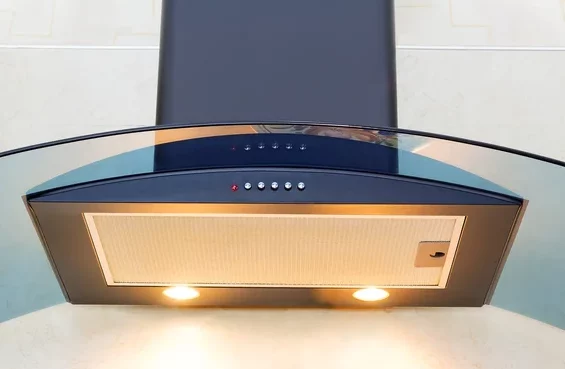
If your range hood has a canopy, you can normally install the fused branch above a nearby cabinet and run the flexible cable into the hood via a little piece of pipe that is buried inside the wall from branch. Hidden connections wouldn’t be a problem, and then the isolation would be close, easy, and out of sight.
I know a little bit about electrical wiring, but with so many rules, I usually don’t do much more than rewire a plug.
I have, however, changed galleys by adding fused spurs and extra plugs. The socket must give power to the fused connection unit, which will also be the cooker hood’s isolator. Then, it is hooked up to the exhaust fan. You don’t need the extra insulator for the fan.
If you run a wire behind the chimney and then connect it to the wire from the bells in a junction box, the wire is left hanging. The junction box is loose and not locked down, and if it is round, there are no cable ties.
Concerning the lockable switches, a NIC inspector told me to switch a fused branch that feeds a burglar alarm but doesn’t have a switch to a fused branch that does have a switch and use a padlock to keep it in the on position so it doesn’t get turned off by accident.
A better way is to use a box, either on the surface or flush, with a flexible outlet.
Do not put the FCU behind the hood of the chimney. When the fuse blows, which usually happens when a light bulb goes out, you will have to replace it. If it’s behind the fireplace, you’ll have to take out at least a couple of screws to get to it. I’ve had to deal with a few situations where the chimney couldn’t be taken down because the tiler or kitchen installer had put a lot of work into it.
As others have said, you don’t need a switch that turns off the fan. Put the FCU in an easy-to-find spot.
Best Place to Hide Hood Extractor Switch
I feel like there are already too many light switches in the kitchen, and I’d like to be able to hide some of them.
The best choice is the wall cabinet on the inside. If the hood isn’t made of wood, it’s not a good idea to hide there. Hide the spur in the fake chimney. This is fine to do.
You can’t hide the switch on the hood because if there was a power outage, everything could start moving and you wouldn’t be able to turn it off. If you want to hide the fuse spurs, you can put them in a cabinet.
The socket or spur is used to insulate the area around the hood. It needs to be close to the hood, preferably right next to it, but if the chimney on the hood is easy to take off, many people put the spur just behind it.
The problem is that a recirculating unit is more likely to only let steam and heat into the branch if it is inside the vent. If this is true, I would say not to do it.
The main purpose of a kitchen extractor fan is to get rid of steam and fumes from cooking. Recirculation units don’t do a good job of this, so try to vent it to the outside if you can. If you do this, it will be easier to put the bypass in the dummy part of the hood.
A fused switched bypass outlet inside a cabinet near the fan or even on top of the wall units would be a better solution. This switched fused branch would connect to a point inside the stack that would be a connection point. So, you won’t have to take apart the chimney/appliance if the fuse blows or you need to turn off the fan.
Can A Switch That Turns Off the Fan Be Put Above the Stove?
There shouldn’t be any switches on top of the stove. Instead, they should be at least 300 mm to one side. I usually put the fan’s exhaust hose on the kitchen cabinets.
Contrary to what most people think, some people are electrically aware and like to unplug or insulate before changing a light bulb or cleaning the filters and inside of the hood.
“Temporarily,” the insulator is on top of the fan cover (just to the left of the narrowest part of the chimney, but definitely above the counter line). In a home setting, the extractor is a standard recirculation canopy.
People put the exhaust fan high above the kitchen cabinet because the cords are usually very short. If you want a switch next to the stove, you’ll need to run a separate cable to the fan and tie it together. If you clean the filter or change a light bulb, are you likely to get shocked? What is the risk if the unit is off? When changing light bulbs at home, it’s best not to turn off the circuit, and I’m sure no one else here does that either.
Conclusion
It is not a good idea to run several spurs from the same plug. You need to have an electrician extend the ring at that point and add the isolating switch to the main ring. It’s not hard to do.
When installing extractor fans, the most important thing to think about is how much space there is between the fan and any countertops that are installed below. There is no legal minimum height for installing extractor fans on electric stoves, but the minimum height recommended is written in the instructions that come with both the stove and the extractor.
When installing extractor fans on gas stoves, both the stove and the extractor must meet the minimum height requirements listed in their manuals.
